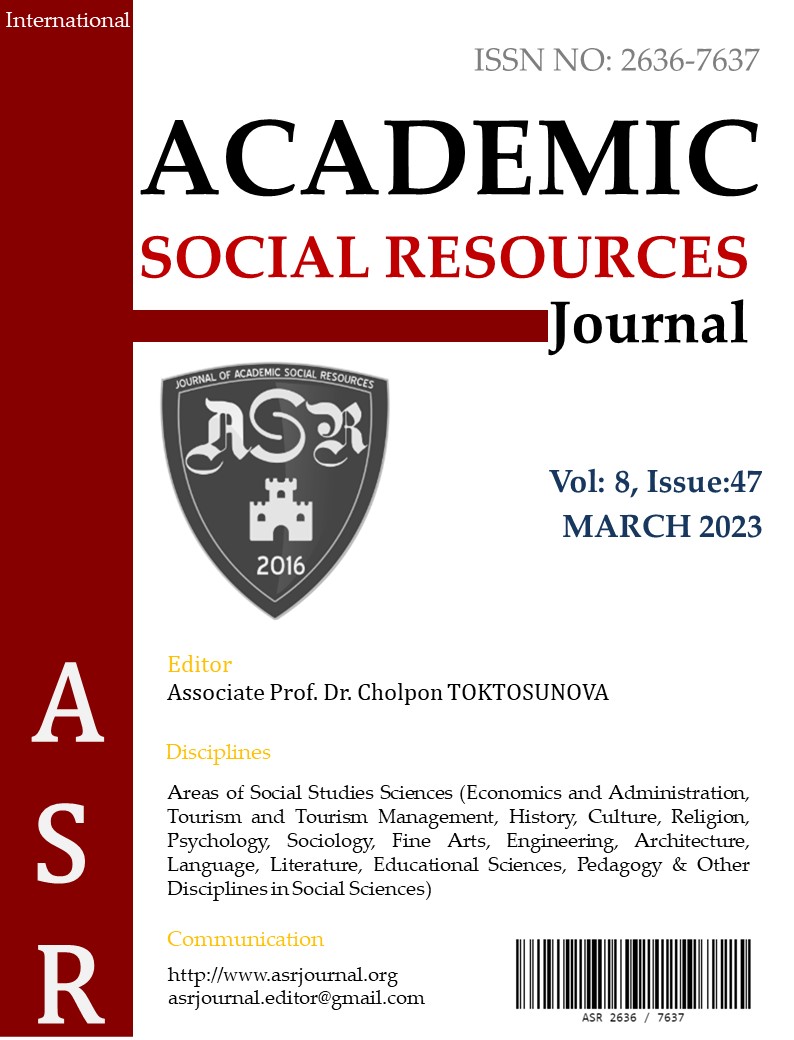Author :
Abstract
İnsan kafatasındaki frontal kemik doğumdan önce ve doğumdan sonra metopik sutur ile ayrılan iki parçadan oluşmaktadır. Metopik sutur 9 ay-8 yaş arasında kaynaşarak yetişkinlik dönemindeki frontal kemiği tek parça haline getirmektedir. Metopik suturun, frontal kemiğin glabellar bölgesinde kapanmasından sonra karmaşık kemikleşme sürecinin sonucunda oluşan ikincil bir kısa sutur kalıntısı görülmektedir. Bu ikincil sutu rmetopik sutur varyantı veya supranasal sutur olarak isimlendirilmektedir. Metopik sutur varyantı; “çizgisel (I)”, “H”, “V”, “U” ve“zikzak” olmak üzere 5 şekilde sınıflandırılmıştır. Çalışmanın amacı, Lapseki Lahit’inden çıkarılan kafataslarında gözlenen metopik sutur varyantı tiplerinin frekanslarını belirlemektir. Çalışmada Roma dönemine ait 38 bireyin kafatasına bakılmıştır. 18 kafatasında frontal kemiğin yokluğu veya kırık olmasından dolayı varyanta bakılamamıştır. 6 kafatasında tam metopik sutur kaynaşmaması (metopizm) tespit edilmiştir ve değerlendirme 14 kafatası üzerinden yapılmıştır. 14 kafatasının 8 (%57,14)’i “zikzak” 5 (%35,72)’i “I” ve 1 (%7,14)’i “U” biçimindedir. Eski Anadolu toplumlarından Van Kalesi Höyüğü ile karşılaştırıldığında “zikzak” biçimli metopik sutur varyantı her ikisinde de en yüksek orandadır. Anatomik çalışmalarda daha çok “I” biçimli sutur varyantı gözlenmektedir. Metopik varyant sutur şekli açısından cinsiyetler arası bir anlamlılık bulunamamıştır. 3 kadın kafatasının 2’sinde “I” ve 1’inde “zikzak” biçimi gözlenirken, 11 erkek kafatasının 3’ünde “I”, 7’sinde “zikzak” ve 1’inde “U” biçimi varyant tespit edilmiştir.
Keywords
Abstract
The frontal bone in the human skull consists of two parts, with the metopic suture before and after birth. The metopic suture fuses between 9 month sand 8 years, and the frontal bone in adulthood becomes a single piece. After fractures of the metopic suture in the glabellar region of the frontal bone, the remnants of a continuous short suture are seen as a result of continued complex ossification. In this case, the suture is called a metopic suture prediction or supranasal suture. Metopic suture variant; It is classified in 5 ways as “linear (I)”, “H”, “V”, “U” and “zig-zag”. The study aims to determine the types of metopic suture prediction observed in Lapseki sarcophagus. In the study, the skulls of 38 individuals belonging to the Roman period were examined. Foresight could not be considered due to the absence or fracture of the frontal bone in 18 skulls. In addition, complete metopic suture non-fusing (metopism) was detected in 6 skulls. Of the 14 skulls, 8 (57.14%) are “zig-zag”, 5 (35.72%) “I”, and 1 (7.14%) “U” shaped. Observations of zig-zag-shaped metopic sutures in the Van Castle Mound from the ancient Anatolian societies and the opposite neighborhood are the highest in both. More shaped suture protectors than anatomical protectors are observed. There was no positivity between sexes in terms of suture shape in metopic observations. While the "I" shape was observed in 2 of 3 female skulls and the "zig-zag" shape was observed in 1 skull, the "I" shape was observed in 3 of 11 male skulls, the "zig-zag" shape in 7 and the "U" shape in 1 skull.
